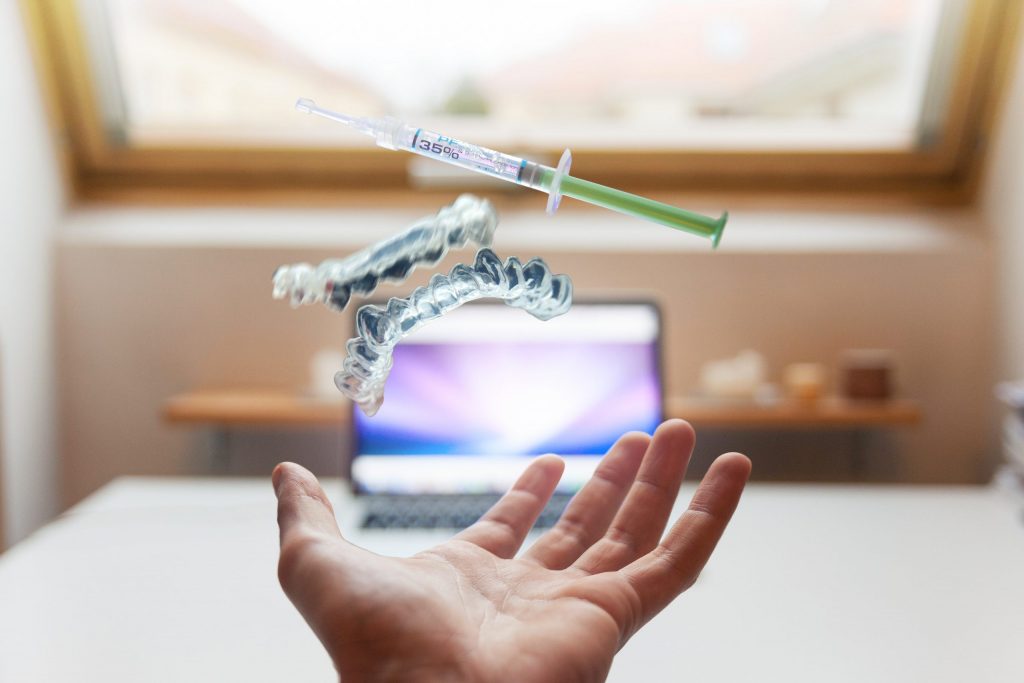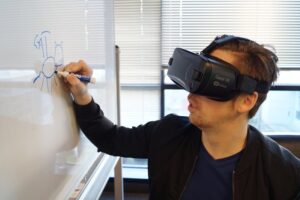
The COVID-19 pandemic has pushed the healthcare industry to the limit, making providers speed up the adoption of health IT tools allowing for remote healthcare services.
One of the brightest examples of such tools is telemedicine. According to Statista, telemedicine that was not too popular in pre-pandemic times saw a 30-fold increase in implementation as of April 2020. Now its upgraded version is banging at the door — that’s telemedicine enhanced with AR and VR. Let’s explore it below.
AR & VR in telemedicine: how does it work?
AR and VR tools in healthcare ceased to be treated as a mere entertainment gimmick. Now they are widely used in medical education and even therapy. But how can the technologies be used in telemedicine? Isn’t it virtual enough already?
In fact, telemedicine and all types of mixed reality (MR) go along very well. MR technologies let clinicians get real-time information on patients’ vitals and experiences, which can improve diagnosing.
What’s more, the actual implementation is no longer that complex, according to Iflexion, an AR company. You only need some AR/VR headwear and an accompanying app. The app should be vendor-agnostic and compatible with the telemedicine solution you have onboard. Besides, VR headsets are no longer overly expensive, and it’s possible to find a quality product at a reasonable price. Some companies (for example, XRHealth) even consider renting them out.
However, MR-enhanced telemedicine is not only about tools and apps. It’s about users as well — clinicians and patients. So in case you decide to go for it, you’ll need to educate your medical staff about using the tools and have them teach patients accordingly during a preliminary meeting.

But how exactly an e-consultation goes when mediated through VR or AR? In the case of XRHealth, for example, the doctor and the patient put on their VR headsets, and the patient shares their vitals with the doctor via the internet. The in-built sensors measure the heart rate, temperature, blood oxygen, respiratory rate and effort, and more. With these sensors in place, the doctor can observe and track symptoms in real time.
This helps doctors make informed decisions about patients’ health and prevent misdiagnosis if the patient supplies insufficient subjective information. In all other aspects, an e-consultation goes as usual — doctors evaluate symptoms and prescribe treatments and medicines to cure them. Though XRHealth doctors are professional clinicians, they send detailed reports on each patient back to the patient’s primary provider to keep them informed and prevent potential data losses.
There’s yet another potential use case. AR-enhanced telemedicine tools can be used for better diagnostic collaboration between medical professionals. This is the case with Vuzix and VSee that partnered to create AR smart glasses for a telehealth platform. Upscaling the telehealth platform with AR support, the partners allow clinicians to share the images of their cases to get a consultation from other professionals during a video conference. For now, the producers offer their AR-enriched telemedicine tool only to professionals for training and telesurgery purposes. However, they see some potential in using it during patients’ e-visits in the future.
Dispelling AR and VR use concerns
Like any other technology, AR and VR pose some use concerns. Some of them are there forever — the glasses’ side effects, such as nausea and dizziness, and their impact on some patient populations during e-sessions. These populations include patients with neurological and psychological disorders.
Other concerns have to do with these turbulent times. Some providers may wonder about the relevance of AR telemedicine in the post-pandemic period and, consequently, about the feasibility of this investment.
Let’s first turn to statistics from reputable sources. When it comes to the use of AR and VR in healthcare, a Kenneth Research report predicts a steady market growth at a CAGR of 30.1% in 2018-2025.

Next, in the times of the pandemic, even healthy people may feel lonely due to stay-at-home policies, let alone people suffering from chronic conditions, who may feel depressed when deprived of socializing and interacting with others. VR and AR technologies may solve this problem for them.
For instance, it’s possible to set up specific VR support groups that allow people suffering from the same condition to connect with each other in 3D.
VR technologies create virtual spaces that facilitate communication and connection of individuals located internationally. Support groups help these patients overcome the loneliness caused by isolation due to the pandemic.
The feeling of loneliness and depression are common in these patient populations. A 2019 study on depression in patients with chronic condition reports that 40-80% of the US patients experience depressive disorders, so support groups that alleviate these conditions are unlikely to lose relevance anytime soon.
Additionally, AR- or VR-enriched telemedicine is likely to make part of post-pandemic strategies for managing infectious disease outbreaks. They help reduce the exposure to viruses for both clinicians and patients, with no harm to the quality of care. Providing insightful data on patients’ health in real time, this type of telemedicine may also help improve resource management.
Summing up
As we can see, the use of AR and VR in telemedicine services is not a fad. These technologies scale up the user experience for both doctors and patients. Doctors can get a bird’s eye view of patients’ health in real time and make an informed decision on treatments or the need for hospitalization. What’s more, with AR/VR-telemedicine in place, providers can deliver top-level patient experience remotely and improve retention.
Patients in their turn receive better care from any place. They also get an opportunity to reach out to fellow patients or experts for more information on their diseases or better care practices. Besides, telemedicine coupled with AR/VR may assist patients in mitigating psychological problems, such as anxiety and depression. All the points above considered, we may safely conclude that AR- or VR-enriched telemedicine is about to turn into a new norm soon.
ABOUT THE AUTHOR: Tatyana Shavel is a VR/AR Technology Analyst at Iflexion. She works in the intersection of business and technology exploring the practical use of augmented and virtual reality for smarter business and a better world. In addition to keeping a constant pulse on industry trends, she enjoys digging into data and conducting research.










